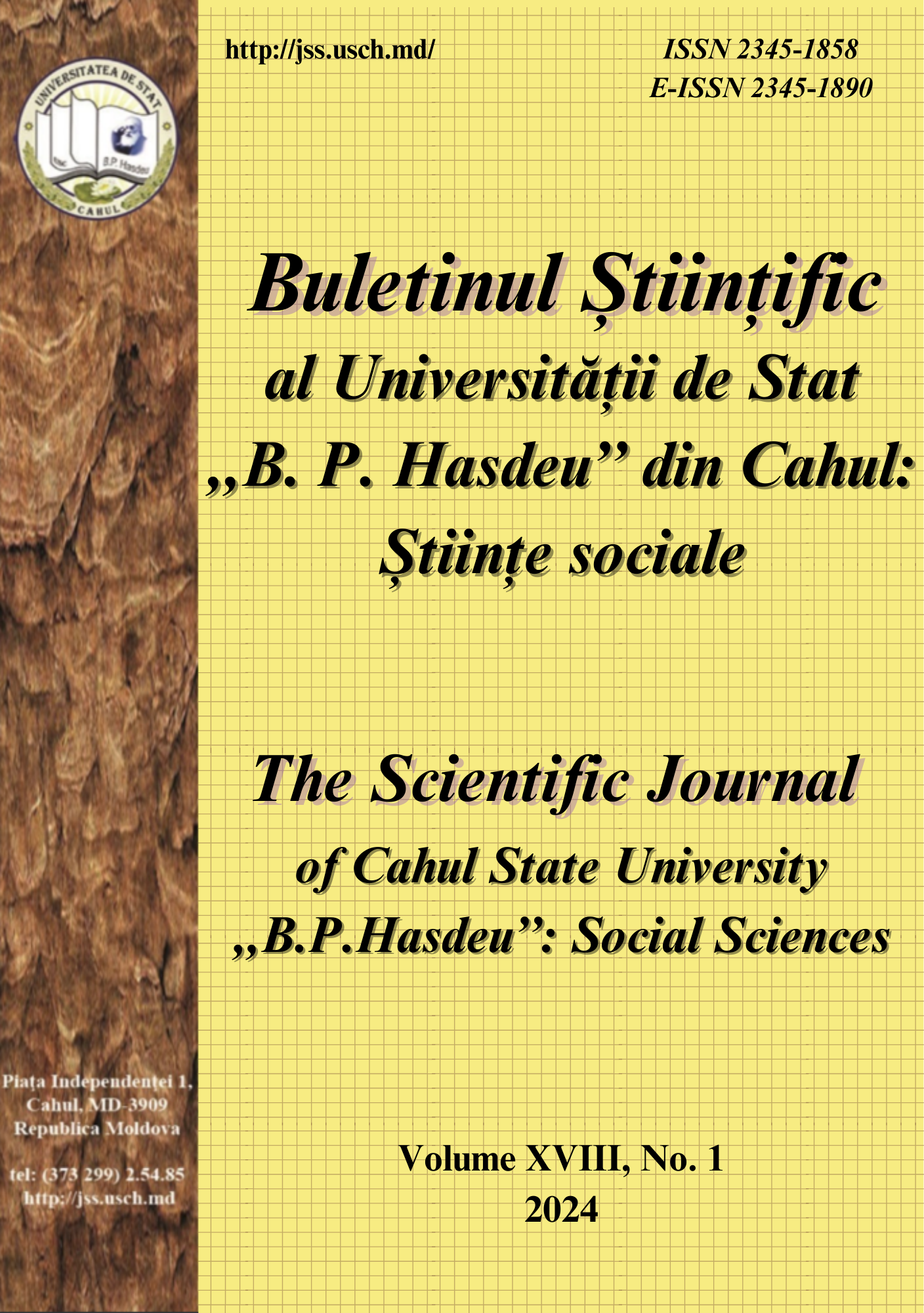THE PENETRATION OF NARODNIKIST IDEAS IN BESSARABIA AND THE STRUGGLE OF THE GOVERNMENT DIRECTORATE OF THE GENDARMERIE CORPS AGAINST THEM
THE PENETRATION OF NARODNIKIST IDEAS IN BESSARABIA AND THE STRUGGLE OF THE GOVERNMENT DIRECTORATE OF THE GENDARMERIE CORPS AGAINST THEM
Author(s): Artur LeșcuSubject(s): History of ideas
Published by: Universitatea de Stat „Bogdan Petriceicu Hasdeu” din Cahul
Keywords: Gendarmerie Directorate; Bessarabia; social-political movement; Norodnicist ideas;
Summary/Abstract: The Russian Empire, an autocratic state with strong remnants of feudal caste law, was based on a legal system that aimed to intimidate the citizenry in order to defend and preserve the existing anachronistic social order. Various specialized state institutions were responsible for the security of the regime and internal order, among which the Gendarmerie Corps played a central role. This Corps was established on September 9, 1867, and later the Bessarabia region's Government Gendarmerie Directorate was established. Immediately after its establishment, the Government Directorate of Gendarmes faced the spread in the region of Narodnikist ideas, the dominant current in the social-political and anti-government movement in the Russian Empire in the 60s-90s of the 19th century. The activity to combat the revolutionary trend in Bessarabia, especially the Narodnikist one, was based on two principles: the implementation of preventive measures against the revolutionary movement and the undertaking of follow-up actions aimed at annihilating concrete cases of anti-government activity. Of those duties, the simplest was the supervision of studious youth, whose number in Bessarabia was quite limited. According to the statistical data on the number of secondary school (high school) students, compiled by the Bessarabia Gendarmerie Directorate for the year 1881, their number was quite small, 2,788 people. The small number of intellectuals made it easier for the Bessarabian gendarmes, limited in quantity, to detect and supervise people who could possibly join the Narodnikist movement. The concerns of the gendarmes in combating the Narodnikist movement were complicated and difficult. Due to the lack of internal premises for development, it was focused on combating the activity of followers of revolutionary ideas among Bessarabian students in the main university centers of the empire, among which Zamfir Ralli-Arbore stood out. In Switzerland, Z. Ralli-Arbore organizes the clandestine transportation of anti-government literature to the Russian Empire, the activity that gave the Bessarabian gendarmes so much trouble. The burden of fighting the smuggling phenomenon fell to the Independent Border Guard Corps and police bodies, the gendarmes having the mission of coordinating the actions and taking over cases related to state security, the activity, which was quite inefficient. In addition to illegal literature, the smugglers successfully transported across the country's borders typographic characters, but also entire printing presses, passing them off as agricultural machines, which they officially sent from Romania to the Reni station. Despite these successes, the tsarist authorities and especially the gendarmerie were hardly able to cope with the phenomenon of smuggling, the rate of completion of investigations and convictions on this article being extremely low, reaching the figure of approximately 7% of the total number of apprehensions.The Directorate's major concern was also combating the activity of revolutionary circles and the individual actions of the representatives of the anti-government movement existing in the region. The first socialistic circle in Bessarabia was founded in 1874 by Nicolae Zubcu-Codreanu, who stirred up the studious youth of Chisinau. Under the influence of Norodnicist ideas, some of the studious Romanian youth practiced "walking into the people". Thus, Petru Braga, a student of the Theological Seminary in Chisinau "went to the people, being inspired by the populist movement, establishing a blacksmith's shop in his native village, Ulmu", followed by another student of the Seminary, Filip Codreanu, a relative of N. Zubcu-Codreanu and the father of the future academician of the Romanian Academy, Radu Codreanu, who went to Nisporeni as a teacher, under the influence of the same movement, for propaganda purposes.The Norodnicist movement in Bessarabia had an isolated character and was strictly supervised by the police and gendarmes, who played a secondary role to the police bodies. Due to the internal deficiencies characteristic of this state institution at the beginning of its activity, such as the lack of professionalism and highly qualified personnel, the Directorate was hardly able to face the situation, having the opportunity to stop the wave of revolutionary smuggling and the spread of revolutionary ideas among the population, especially among studious youth. This state of affairs was tolerable in times of peace and political calm, but could cause great problems in times of political crisis or war. The influence of Narodnikism in Bessarabia did not take on proportions not because of the effective activity of the gendarmes, but because of the internal degeneration of the movement.
Journal: Buletinul Științific al Universității de Stat “Bogdan Petriceicu Hasdeu” din Cahul: Științe Sociale
- Issue Year: XVIII/2024
- Issue No: 1
- Page Range: 44-60
- Page Count: 17
- Language: English

